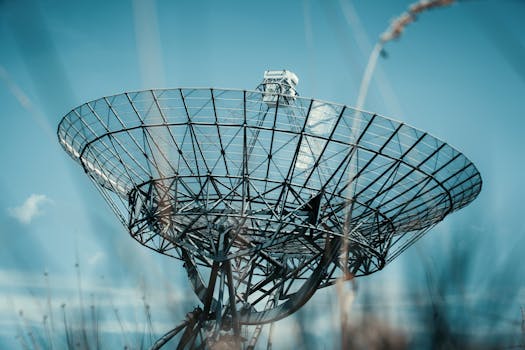
The Satellite Revolution: How New Networks are Reshaping Telecommunications. The satellite revolution is transforming the telecommunications industry with new networks and technologies, enabling faster and more reliable connectivity worldwide. One of the key drivers of this revolution is the development of low-Earth orbit (LEO) satellites, which offer lower latency and higher throughput than traditional geostationary satellites.
Companies such as SpaceX, OneWeb, and Amazon’s Kuiper Systems are launching thousands of LEO satellites into orbit, creating a network of interconnected satellites that can provide broadband internet access to remote and underserved areas. This is particularly significant for areas where traditional fiber-optic cables are not available or are too expensive to deploy.
The satellite revolution is not just about providing internet access to remote areas; it’s also about transforming the way we communicate and conduct business. With the advent of 5G networks and the Internet of Things (IoT), there is a growing need for faster and more reliable connectivity. Satellite networks can provide this connectivity, enabling new use cases such as smart cities, autonomous vehicles, and remote healthcare.
In addition to LEO satellites, other technologies such as high-throughput satellites (HTS) and very small aperture terminals (VSATs) are also playing a key role in the satellite revolution. HTS satellites offer higher throughput and more efficient use of bandwidth, while VSATs provide a cost-effective and compact solution for broadband access.
The satellite revolution is also driving innovation in the field of satellite manufacturing and launch. Companies such as Rocket Lab and Relativity Space are developing new launch vehicles and manufacturing techniques that can produce satellites faster and more cheaply than traditional methods. This is enabling the deployment of larger constellations of satellites, which can provide more comprehensive and reliable coverage.
Another area where the satellite revolution is having an impact is in the field of space exploration. With the development of new satellite technologies and launch vehicles, it is becoming more feasible to explore and utilize space for commercial and scientific purposes. For example, companies such as Planetary Resources and Deep Space Industries are planning to use satellites to explore and mine asteroids for valuable resources.
However, the satellite revolution also poses significant challenges, such as the risk of space debris and the need for regulatory frameworks to govern the use of satellite technologies. As the number of satellites in orbit increases, there is a growing risk of collisions and the creation of debris that can endanger other satellites and spacecraft. This highlights the need for sustainable and responsible practices in the development and deployment of satellite technologies.
In conclusion, the satellite revolution is transforming the telecommunications industry and enabling new use cases and applications. With the development of LEO satellites, HTS, and VSATs, and the innovation in satellite manufacturing and launch, the satellite revolution is poised to continue shaping the future of telecommunications and space exploration.
The impact of the satellite revolution will be felt across various industries, from telecommunications and space exploration to healthcare and finance. As the satellite revolution continues to unfold, it is essential to address the challenges and risks associated with it, such as space debris and regulatory frameworks, to ensure that the benefits of the satellite revolution are realized and sustained.




